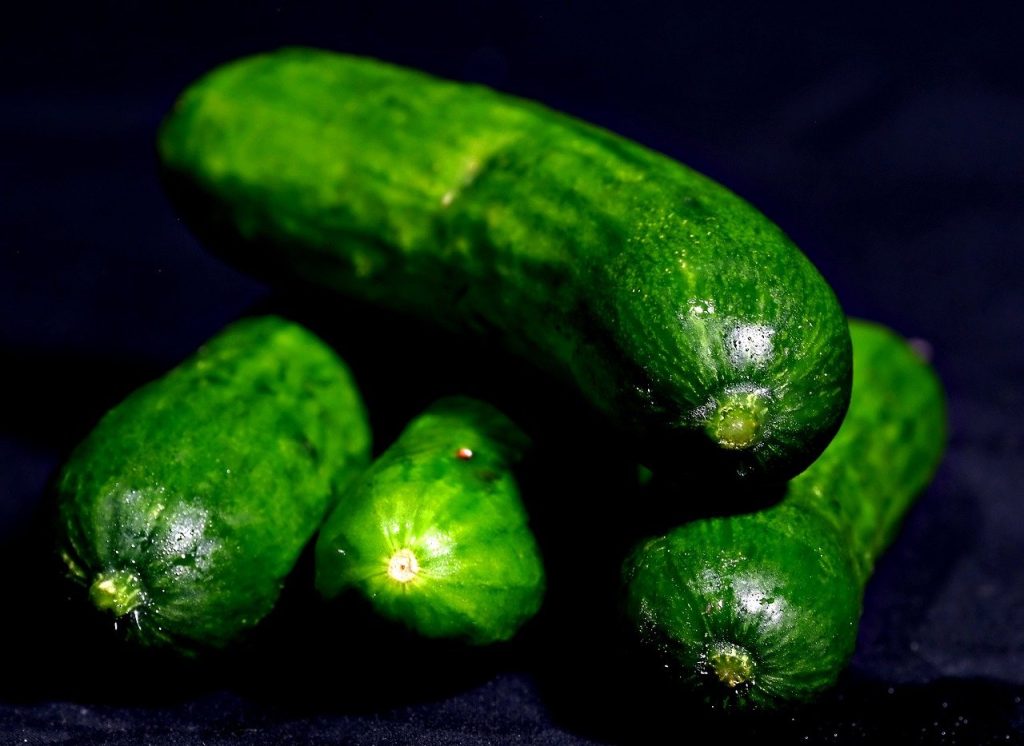All fields are required
Posted in Outbreaks & Recalls,Salmonella on July 5, 2024

Federal health officials finally have the cucumber outbreak source uncovered. Turns out, untreated canal water was to blame for the hundreds of illnesses and significant hospitalizations surrounding these fresh summer veggies.
Since early June, Salmonella illnesses have been piling up. Local health care providers have seen an uptick in Salmonella infections and referring patient samples onto the national foodborne illness database, PulseNet.
Whole genome sequencing of patient samples determined a cluster of illness with the same highly related strain of Salmonella Africana.
Later that month, additional Salmonella infections with a different strain started to occur. This time with Salmonella Braenderup. At the time it was unclear whether the two Salmonella infection clusters were related. However, through epidemiological traceback investigations with patient interview data, it was clear that there was in fact one outbreak with two bacterial strains going on.
While data pointed to cucumber, the specific cucumber outbreak source was unknown.
Overall, there were 449 reported illnesses associated with the cucumber outbreak. This resulted in at least 125 hospitalizations. According to the Centers for Disease Control and Prevention (CDC), the last reported case indicated an illness onset of June 4, 2024.
So far there have been no deaths reported in connection with this outbreak.
This cucumber outbreak spanned 31 states and the District of Columbia and included Alabama, Arkansas, Connecticut, Delaware, Florida, Georgia, Illinois, Indiana, Iowa, Kentucky, Maine, Maryland, Massachusetts, Michigan, Minnesota, Missouri, Nevada, New Jersey, New York, North Carolina, Ohio, Oklahoma, Pennsylvania, Rhode Island, South Carolina, Tennessee, Texas, Virginia, Vermont, Washington, and Wisconsin.
Bedner Growers, Inc., of Boynton Beach, Florida has been identified as the likely cucumber outbreak source. However, this grower does not account for all of the illnesses identified in this outbreak. This is based on laboratory, epidemiological, and traceback data obtained throughout the state and federal investigations.
The original investigation pointed to Fresh Start Produce Sales, Inc., a produce distribution company that takes in many different products from several farms.
Bedner Growers Inc., was identified as a cucumber outbreak source following sampling activities.
The U.S. Food and Drug Administration (FDA) collected samples from many different sources. Among them was the untreated canal water used by Bedner Growers, Inc. Laboratory results identified Salmonella Braenderup. The same, genetically similar, strain of Salmonella Braenderup associated with this multi-state outbreak.
Additional Salmonella strains were detected in both the soil and water samples collected from the farm.
The CDC and FDA are performing additional analysis to determine if these strains are connected to patient samples.
Despite discovering significant illnesses linked to cucumbers supplied at points of purchase in outbreak patients, there are still unanswered questions.
The FDA continues to investigate the cucumber outbreak source that may include additional growers, suppliers, or strains found in the other soil and water samples obtained from the Bedner Growers, Inc. property.
Many patients continue to battle illness. With additional complications, the impact of this outbreak is far from over for them. However, officials believe that ongoing risk to the public is minimal at this time.
Bedner Growers, Inc.’s cucumber growing and harvesting season has come to an end. There is no longer product from this farm on the market. All cucumbers supplied from this farm, and likely from this growing region, are now expired.
As such, there is likely no ongoing risk to the public with respect to this cucumber Salmonella outbreak.
Some may only experience mild symptoms of fever, diarrhea, and/or vomiting. In many cases, symptoms can resolve without medical intervention. Most of these cases go unreported, as they are never tested for Salmonella.
In more serious cases, the bacteria can leave the bloodstream and affect other parts of the body or cause significant dehydration.
Dehydration is a serious concern for illnesses involving diarrhea and vomiting. These symptoms can deplete the body of important fluid, leading to additional health concerns.
Dehydration symptoms may include:
Bloodstream infections, also known as bacteremia, occur when the bacteria leaves the intestinal tract and moves throughout the body by way of the bloodstream. These infections can lead to urinary tract infections, meningitis, endocarditis (infection in the lining of the heart or valves), osteomyelitis (infection in the bones or bone marrow), or infections in the blood vessel linings.
Some Salmonella infections can affect collagen in the joints. This leads to a condition known as reactive arthritis or Reiter’s syndrome.
Common symptoms of reactive arthritis include painful joints, eye irritation, and painful urination. These symptoms can last for months. Even years!
For the most part, many people can recover on their own without medical help. Most normally healthy people do not experience serious complications beyond bowel habits that take extended time to return to normal.
However, it is important to know the warning signs of serious illness to avoid potentially fatal complications.
Call your doctor if:
If you or a loved one has been impacted by this cucumber outbreak, you may have a legal case. You need an experienced Salmonella lawyer. The Lange Law Firm, PLLC can help!
Call (833) 330-3663 for a free consultation and a compassionate member of the team will go over the details of your situation to determine if you have a legal case. You can also click here to email. The Lange Law Firm, PLLC has won millions of dollars for clients with cases just like yours. Get the help you deserve.
By: Heather Van Tassell (contributing writer, non-lawyer)